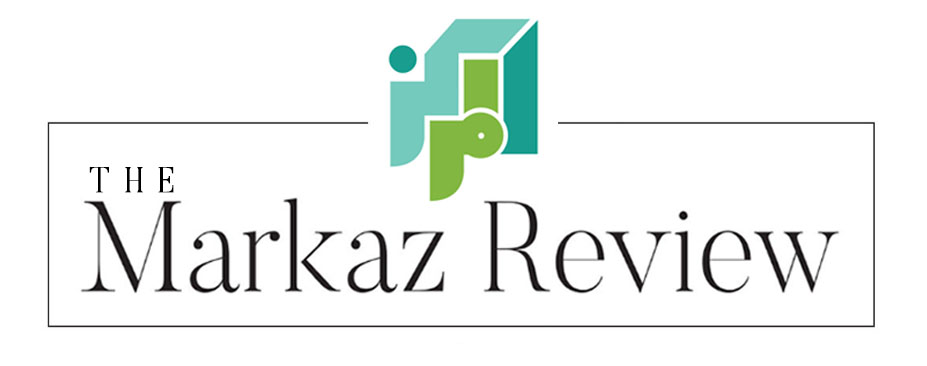Malu Halasa & Jordan Elgrably
Our brains are like palimpsests or computer memory: we continuously write over, erase, reconfigure and frequently forget what came before, and yet we are all of the above — we are what we can articulate, and what we may prefer to disremember. But how much of forgetting is in fact unavoidable, and how much is intentional?
Traditionally neuroscientists believed that memory lives in the brain’s temporal lobe, the hippocampus, and that fragments of experience linger in the prefrontal cortex. These could be activated by a sound, smell, color, even a touch. New research suggests memory is lodged in the connections or synapses between the cells. As memory forms, neurons in one region of the brain form, while neurons in another region are destroyed. A recent study on poor zebrafish came across perhaps one of the early indications of where forgetfulness resides.
The essays and art in The Markaz Review’s issue on forgetting rely on props, prompts, and ancient materials to conjure forth forgotten memory, sometimes obscured or erased, other instances hidden in plain sight. In creative nonfiction, in “Regarding the Photographs of Others,” Nabil Salih considers the photographs of his own Iraqi family and is haunted by violence, both homegrown and foreign, that has laid waste to his country. In “Bloodied Dispatches,” the award-winning, Mauritanian novelist Ahmed Isselmou passes by a commemorative tree every morning on his way into work at Al Jazeera’s newsroom, which has on its leaves the names of the correspondents and cameramen who have been killed in wars, which have ravaged the region. His essay, translated from the Arabic by Rana Asfour, gives insight into the pressures faced by journalist-broadcasters in the field — many of whom have been targeted or their families targeted — and the news team in Doha, as they attempt to navigate graphically upsetting images coming in daily from Israel’s war on Gaza.
It is a cotton flower that sparks the memory of young illicit love in the eponymous short story by the Egyptian writer, novelist and film critic Areej Gamal, translated by Manal Shalaby. This is the first of in a collection of short stories in Arabic newly translated into English by The Markaz Review, which will be featured in a new anthology edited by the Markaz’s Arabic editor, Mohammad Rabie.
Gabriel Polley’s walk through Palestine’s forgotten shines (“Not Forgotten, Not (All) Erased“) unearths a forgotten landscape of Islamic maqam before Israel marketed its version of “the Holy Land.” Hazem Harb, this issue’s Featured Artist, has addressed the re-branding of Palestine in his Hollyland collage series, where the letters of the artwork’s title sits over ancient sites of Jericho and Mar Saba, like the Hollywood Hills sign in the Santa Monica Mountains. For the artist, now living in Dubai, the early materials he used while growing up in Gaza, charcoal and gauze, have been instrumental in helping him deal with Israel’s arrest and torture of his father and family, in Gaza City.
There can be no more forgotten people than those left behind and routinely tortured in the Syria’s extensive detention system. Surprisingly first-person accounts from Syrian Gulag: Inside Assad’s Prison System, by the former Syrian detainee Jaber Baker and Turkish academic Ugur Ümit Üngör, capture both the lowest level of brutalization and the very best of unimaginable human resilience. And Reem Alghazzi, exiled from Bashar Al-Assad’s Syria, laments the loss of her country, trying to forget, in “Freedom—Ruminations of a Syrian Refugee.”
In “Forgotten & Silenced Histories,” Nathalie Bernstien and Mustapha Outbakat review Brahim El Guabli’s Moroccan Other-Archives, which remembers the country’s lost Jewish community and reclaims Morocco’s indigenous Amazigh heritage, while recounting some of the stories of prisoners of the Years of Lead. Novelist Saleem Haddad reviews My Brother, My Land, an anthropological recovery of Sireen Sawalha’s family history, fleeing the Nakba, only to return in 1967, while in “A Proustian Alexandria,” a native of the city, Mohamed Gohar, contrasts the city’s architecture and photographic imaging as he explores nostalgia for Alexandria’s past. And Mischa Geracoulis has read Bethelehm chef Fadi Kattan’s new book, Bethlehem: A Celebration of Palestinian Food, at a time when Palestinians are under assault as never before.
In this issue’s centerpiece, “Memory Archive: Between Remembering and Forgetting,” novelist and short story writer Mai Al-Nakib relates deeply to the 1999 Wim Wenders film, Until the End of the World, as she goes on a search for truth, meaning and memories that can comfort us in the face of calamity. Likewise, in “The Elephant in the Box,” Asmaa Elgamal uses her fondness for classic Egyptian black-and-white cinema to review her past and how she relates to the tumultuous events of the thawra, Egypt’s popular uprising that would reverberate for years afterward. In her review of Asmae El Moudir’s The Mother of All Lies, a film shot over a period of eight years in Casablanca and Marrakesh, Brittany Landorf also explores memory and forgetting in the media of cinema and photography.
In “Sargon Boulus Revisited: Encomium to an Assyrian Poet,” Egyptian novelist Youssef Rakha relates to the Iraqi poet as he riffs on Arab-Muslim identity, exile and genocide, and in “The Forgetting” one of Turkey’s most admired writers, who is rarely translated into English, Oğuz Atay, invites the reader to roam the mind of a lonely married woman in both the third and first person. And finally, in her essay “The Art of Letting Go,” writer-translator Nashwa Nasreldin reflects that “forgetting can be dangerous,” but “it can also be a force for good.”




